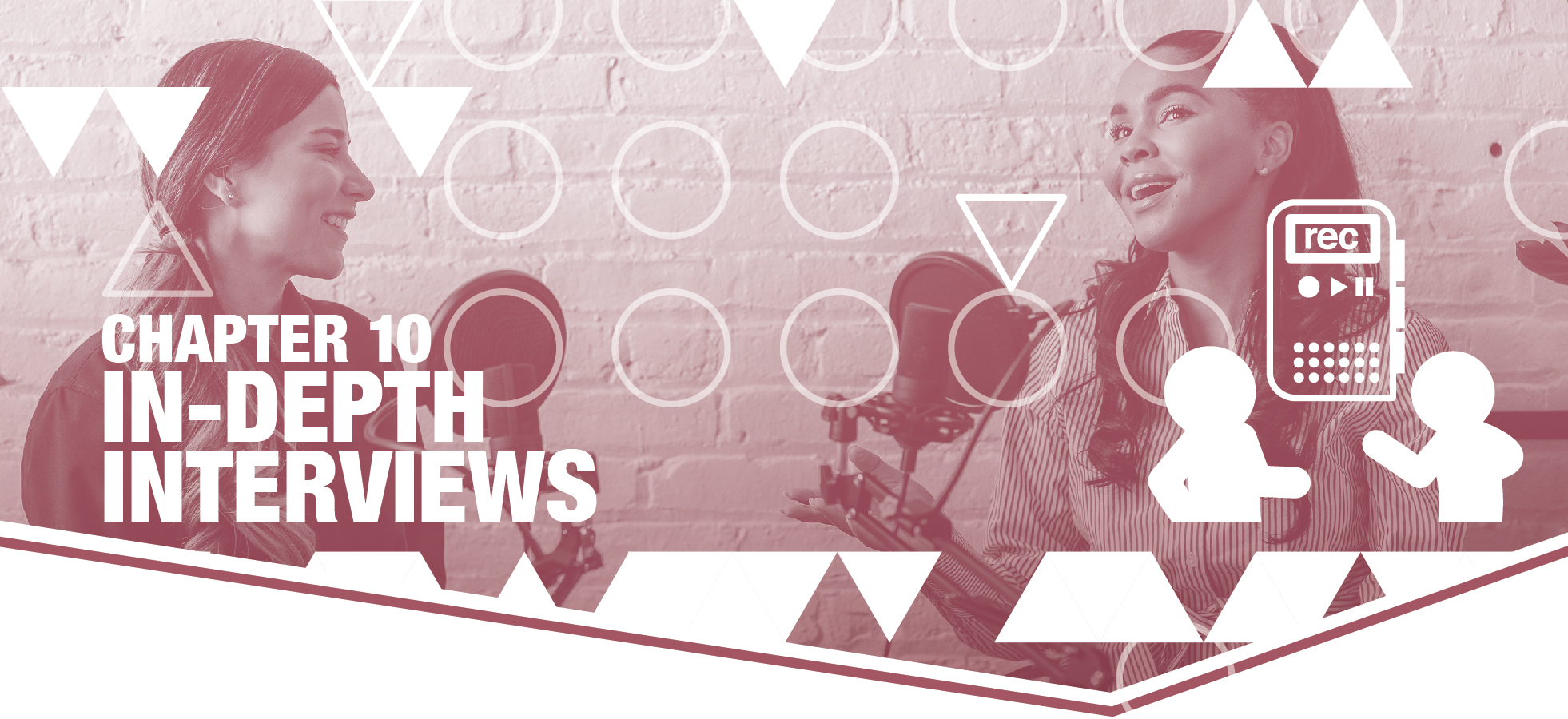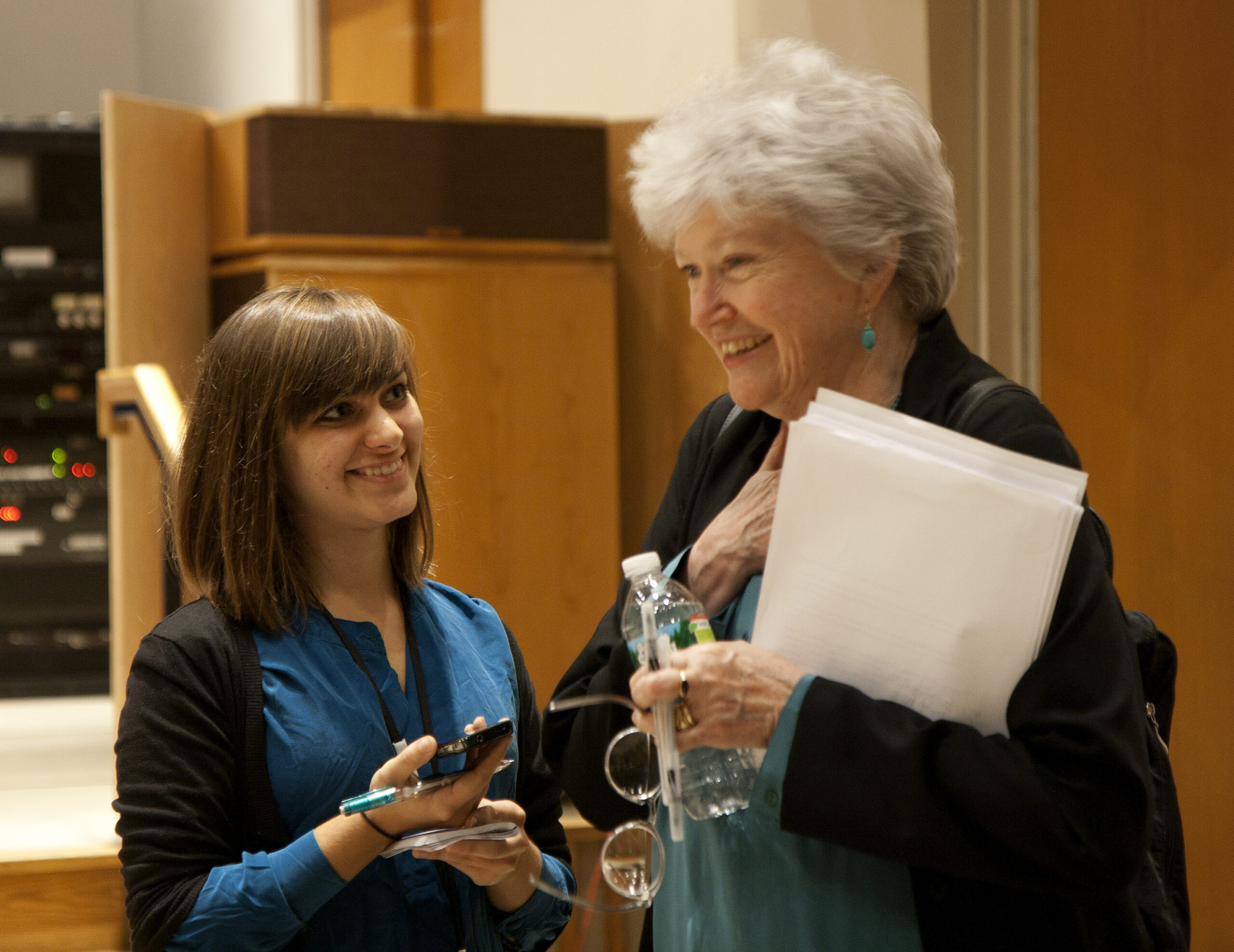10. In-Depth Interviewing
 Interviews involve two or more people exchanging information through a series of questions and answers. Knowing how to conduct a good interview is a useful skill across a variety of professions. Market researchers use interviews to learn what potential or current customers think about their products. Police use interviews to extract information from witnesses and suspects. Journalists are masters of the art of interviewing, given how heavily they rely upon this approach in crafting their stories. On some days they might speak to dozens of people from a wide range of backgrounds—from celebrities and political leaders to random people on the street.
Interviews involve two or more people exchanging information through a series of questions and answers. Knowing how to conduct a good interview is a useful skill across a variety of professions. Market researchers use interviews to learn what potential or current customers think about their products. Police use interviews to extract information from witnesses and suspects. Journalists are masters of the art of interviewing, given how heavily they rely upon this approach in crafting their stories. On some days they might speak to dozens of people from a wide range of backgrounds—from celebrities and political leaders to random people on the street.

Sociologists use two types of interviews to gather data related to their research questions: in-depth interviews and survey interviews. Both allow us to learn what people feel about a particular issue, what their backgrounds and experiences are, and why they act or think in certain ways. However, these two approaches are very different in how they go about collecting data. Broadly speaking, in-depth interviews prioritize depth, while survey interviews prioritize breadth.
When sociologists employ in-depth interviews, they typically hope to hear what an interviewee thinks is important about a topic—and to hear it in their own words, and in detail. The questions for in-depth interviews are more likely to be open-ended questions like “How do you feel about marijuana legalization?” or “Why did you decide to attend college?” These questions can’t be easily answered with a word or two. They encourage interviewees to think intently on a subject and describe their experiences, opinions, and attitudes in depth (hence the name of this approach). This is why in-depth interviews are used for qualitative research, and why they are also called qualitative interviews. Like ethnographic observation, in-depth interviewing is intended to produce richly detailed information (as we’ve discussed before, thick description) that helps us understand complex phenomena.
By contrast, sociologists conduct survey interviews to produce quantitative data. This style of questioning reduces people’s responses to simplified measures that can be tracked across groups and time periods. When using this approach, researchers tend to care less about fully understanding what one person in their sample thinks, and more about seeing how people compare to each other in their responses. To help them discern patterns in people’s diverse and sometimes complicated opinions, survey interviews pose closed-ended questions, asking people to choose from two or more set answers—much like multiple-choice questions or true/false questions do on a test. In this sense, the questions in survey interviews look more like those used in a courtroom cross-examination—not that they are hostile or meant to stump, but that they force the person being interviewed to answer briefly, without elaboration. By contrast, sociologists using in-depth interviews will pose their questions much like lawyers pose questions during a direct examination—asking the person on the stand to tell their story at length and in detail.
If a survey interview tends to have a formal feel to it—a question followed by a brief answer, one after another—a good qualitative interview can feel like a conversation, with few awkward pauses and both the interviewer and interviewee actively participating. That said, it is different from a normal conversation in several key ways. For one thing, the interviewer guides the conversation, asking questions that move the discussion toward areas relevant to the study at hand. That brings us to another key distinction between in-depth interviews and survey interviews. In an in-depth interview, you are not bound to your list of questions. You can follow up on new and unexpected topics that emerge during the conversation. Your questions can change as you learn more information. When you are conducting a survey, however, your questions must be structured: you want the same questions to be asked of your respondents, phrased in exactly the same way. Later in the textbook, we’ll discuss why you might want to mix up your questions in a survey, but generally speaking you need to take a consistent and standardized approach when conducting surveys. Even if a respondent’s answer prompts you to think of a smart follow-up question, you cannot change course. Otherwise, the data you obtain from your survey will not be fully comparable across respondents, who might have been responding differently in part because they were asked more or less different questions.
In this chapter, we focus on in-depth interviews. (Chapter 13: Surveys covers survey interviews, in addition to the other, non-interview methods that researchers take to gather data for surveys.) We’ll take a look at some of the strengths and weaknesses of in-depth interviews, talk about best practices for conducting them, and discuss issues of power and exploitation that come up when you work as intimately with research participants as you do when they are interviewees. Typically, in-depth interviews involve an in-person meeting between two people—the interviewer and interviewee—but interviews need not be limited to two people, nor must they occur in person. Qualitative interviews with more than one interviewee are known as focus groups, and we will discuss them at the end of the chapter, as they present unique advantages and challenges for researchers.
A note about terminology: sociologists use many terms to refer to the person the researcher talks to during interviews. As we’ve discussed in previous chapters, research participant is a catch-all term for anyone involved in research—as the subject of an interview or an ethnographic observation, for instance—and you can rarely go wrong if you use that term. More specifically for interviews, however, you will hear terms like informants, interlocutors, interviewees, and respondents. The latter two terms are perhaps the most commonly used. We personally prefer “interviewee” because its meaning is obvious to nonacademic audiences. Using this terminology can also help us distinguish between people involved in (qualitative) interviews and those participating in (quantitative) surveys: “respondents” is consistently used to describe persons answering questions for a survey (“the survey had 1,039 respondents”), while “interviewees” largely refers to participants in in-depth interviews.[1]
- As usual, sociologists have differing opinions on this subject of what to call human subjects in interviews. For quantitative studies, you usually will hear the term respondent when survey researchers refer to the people they interview or who fill out their forms; occasionally, research participant may be used as well. For qualitative studies, some sociologists prefer informant. However, this term is widely used in law enforcement circles to refer to a person with privileged information related to criminal activities—that is, a ”criminal informant” (CI)—so it carries an implication that the individual has expert knowledge and is engaged in a longer-term collaboration with the researcher, which may or may not be the case for a particular interviewee. The term interlocutor—academic jargon for a person involved in a conversation—is occasionally used, but like “respondent” it sounds rather clinical and formal. Note that when a study involves many interviewees, some may be distinguished as more important by being labeled as that study’s primary or key informants or focal participants (for instance, if they are interviewed or observed more frequently than other individuals in the study). ↵

